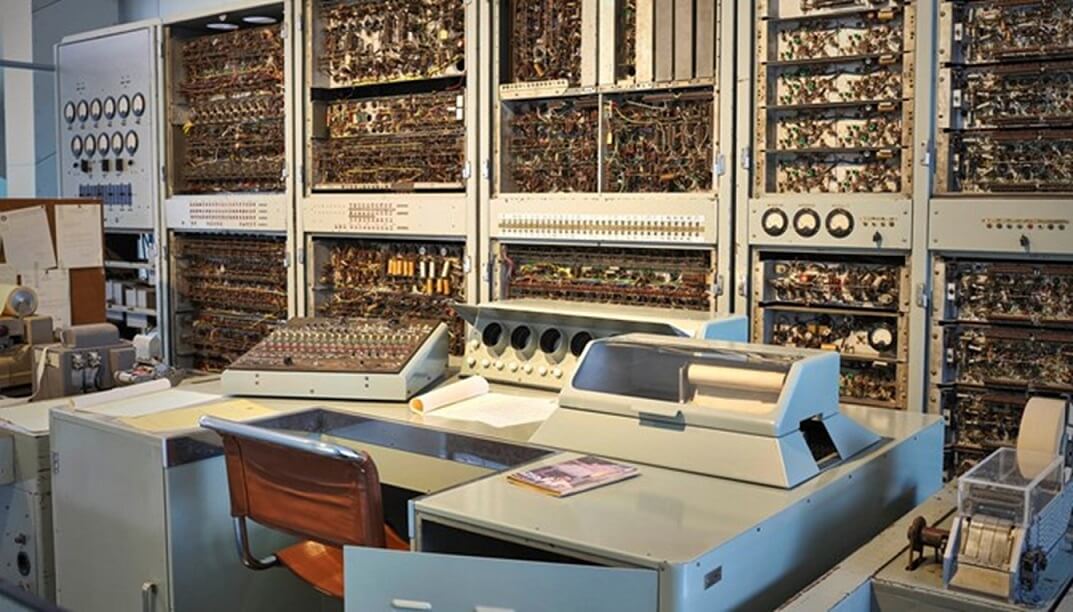A long list of other machines was invented to automate office processes, creating and displacing occupations as they appeared. They included comptometers, a kind of sophisticated adding machine that performed various mathematical computations and was operated by a comptometrist. Comptometers were invented in the late-nineteenth century and were used, in modified forms, until computers finally made them redundant. Comptometrists produced business statements, bills and invoices and compiled lists of financial transactions. Offices also acquired various forms of duplicating machines, including the well-known Gestetner copier, that became a fixture in many schools and universities. First invented in the late-nineteenth century, it was replaced in its turn by the revolutionary copier first marketed successfully by Xerox. Like the Gestetner the Xerox machine was so successful that its name became synonymous with the copier itself.
The computer revolution
If the typewriter and the telephone transformed the office of the late-nineteenth century, the personal computer revolutionised business from the 1980s. Although government departments, universities and some large companies installed mainframe computers from the 1950s, these were designed to process large volumes of data, rather than deal with day-to-day business processes. They were huge machines, often requiring an entire room to house them, and were extremely expensive investments.
CSIRAC (Commonwealth Scientific and Industrial Research Organisation Automated Computer), 1949.
Reproduced courtesy Museums Victoria
CSIRAC was the first stored-memory computer in Australia and only the fourth built in the world. It was about half the size of a shipping container (40 square metres), and incredibly energy-hungry, but its processing power now seems tiny — only 500-1,000 hertz. An average desktop computer in 2018 processed at 2.4 billion hertz! CSIRAC is preserved in the collection of Museums Victoria and is displayed at Scienceworks.
It was not until rival companies Apple and IBM created the personal computer that the prospect of a computer on every office desk became a possibility. With devastating speed, the role of the typist became obsolete in its turn. Office workers who had never learned to type, found themselves expected to master these machines, and new terms like ‘multiskilling’ and ‘multitasking’ entered the lexicon of the office. Within a decade, computers took over at the office and increasingly at home, as the processing power of the microchips that powered them increased with astonishing speed. Only the most senior executives now had the luxury of a secretary, increasingly described instead as ‘personal assistants’. Not surprisingly, almost all of these personal assistants were women too, but by the 1980s women were also working in general administrative and clerical positions in far greater numbers. Nevertheless, the replacement by machines of the army of shorthand typists employed in offices throughout the country had a profound effect, not only on the structure of the office, but on the domestic economy of thousands of households.
In the intervening decades, between the advent of the mainframe computer and the development of more powerful but smaller processors, a range of other occupations came and went. They included occupations that employed women, like those who punched the machine-readable cards controlling different processes on mainframe computers. These key punch operators, or punch card operators, had to work with great accuracy, because a single error could interrupt an entire computer run. My early demographic work involved the use of time on a university mainframe computer and I well remember the tension of waiting to see if I had made any coding errors in the instruction sheets I gave to the key card operators. The cards were first punched, then verified, but even the tiniest error was enough to bring everything to a standstill, wasting time (and money) on the computer. As a graduate student with limited research funding, this was always a source of anxiety. But in the end key card operators came and went rather quickly, swept away by the technological revolution that computerised the entire office.

